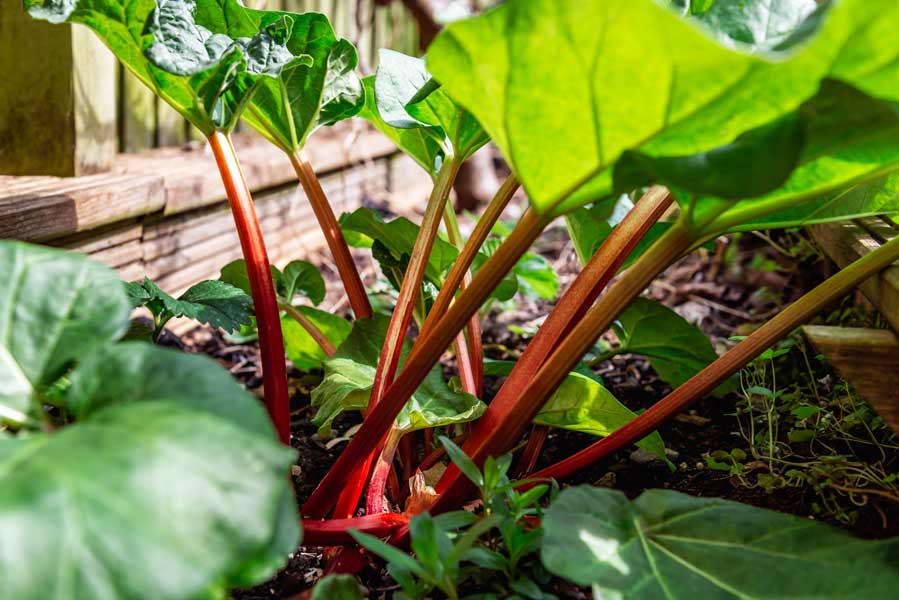Companion planting, a gardening technique rooted in synergy and mutual benefit, plays a vital role in cultivating thriving rhubarb patches. By strategically pairing compatible plants, gardeners unlock a plethora of benefits that foster the robust growth and health of their rhubarb. This approach isn’t just about coexistence; it’s about leveraging the unique qualities of each plant to create a harmonious ecosystem. From enhancing soil fertility to deterring pests and maximizing space utilization, companion plants for rhubarb offer a myriad of advantages that propel garden productivity to new heights.
Ideal Locations for companion planting Rhubarb
When determining the ideal location for companion planting with rhubarb, it’s crucial to consider various factors that contribute to its overall health and vigor. Rhubarb thrives in areas with well-draining soil and abundant sunlight, making it essential to select a sunny spot in your garden. Moreover, ensuring that the soil is rich in organic matter and maintains a slightly acidic to neutral pH level creates optimal growing conditions for your rhubarb plants.
Soil Conditions: Rhubarb flourishes in nutrient-rich, well-draining soil to avoid waterlogged conditions. Sandy loam or loamy soil types are optimal for cultivating rhubarb, providing excellent drainage while retaining essential moisture and nutrients. Before planting, enrich the soil with organic matter such as compost or well-rotted manure to enhance fertility and foster healthy rhubarb growth.
Sun Exposure: Adequate sunlight is vital for the thriving growth and production of robust rhubarb stalks. Choose a planting location that receives full sun or partial shade, ensuring at least six to eight hours of sunlight daily. Sufficient sun exposure enables rhubarb plants to photosynthesize efficiently, resulting in the development of strong, sturdy stalks.
Companion Planting for Rhubarb: Incorporating companion plants can further enhance the growing conditions for rhubarb. These plants not only provide benefits such as pest control, soil improvement, and growth stimulation but also contribute to overall garden biodiversity. Additionally, maintaining proper air circulation, managing soil moisture levels, and preventing overcrowding are essential practices for promoting optimal rhubarb growth and harvesting. By considering these factors and implementing appropriate measures, you can create an environment that encourages healthy rhubarb development while beneficial Pollinator attraction and suppressing weeds.
Good Companion Plants for Rhubarb
Asparagus:
Asparagus and rhubarb thrive in similar soil conditions and benefit from each other’s presence. Planting asparagus near rhubarb can help deter pests and promote overall garden health.

Blueberry
Blueberry bushes prefer acidic soil conditions, making them compatible companions for rhubarb, which also thrives in slightly acidic soil. Together, they create a vibrant and productive garden ecosystem.
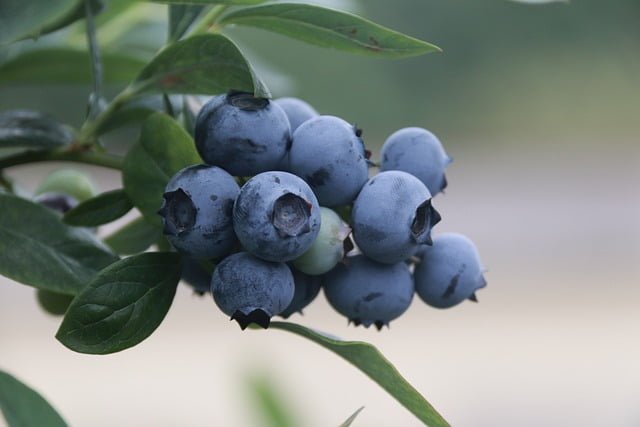
Raspberries
Raspberries and rhubarb share similar growing requirements and can coexist harmoniously in the garden. Planting raspberries alongside rhubarb can help maximize garden space while providing a diverse array of fruits for harvest.
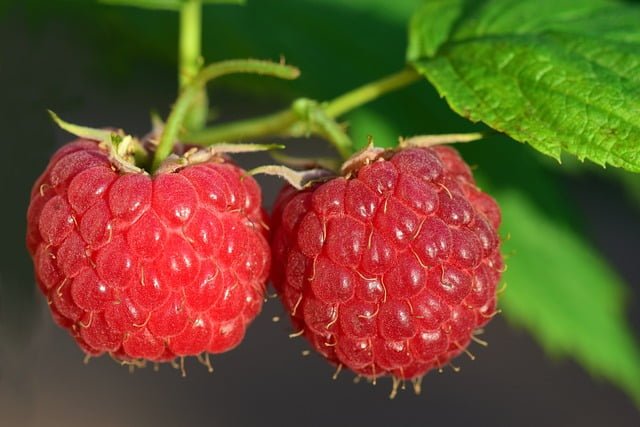
Flowers That Thrive with Rhubarb
Marigolds: Enhancing Rhubarb Growth
Marigolds are not just pretty flowers; they also serve as excellent companions for rhubarb. Their vibrant blooms add a splash of color to the garden while providing numerous benefits to rhubarb plants. Marigolds possess natural pest-repellent properties, helping to deter harmful insects that may damage rhubarb. Additionally, their strong scent can confuse pests and mask the scent of rhubarb, further protecting the plants from potential threats. By planting marigolds alongside rhubarb, gardeners can create a beautiful and resilient garden ecosystem that promotes the health and vitality of both plants.

Chamomile: Promoting Rhubarb Health
Chamomile is another beneficial companion plant for rhubarb, known for its calming fragrance and medicinal properties. When grown alongside rhubarb, chamomile acts as a natural insect repellent, deterring pests that may feed on rhubarb foliage. Additionally, chamomile’s delicate flowers attract pollinators such as bees and butterflies, enhancing the overall biodiversity of the garden. By incorporating chamomile into the rhubarb garden, gardeners not only enjoy its aesthetic appeal but also contribute to the well-being of their rhubarb plants.
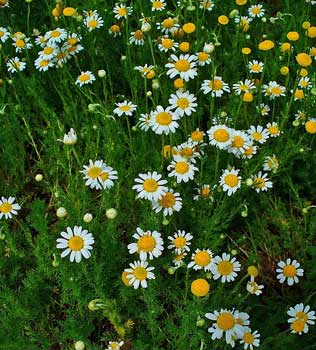
Catnip: Enhancing Garden Diversity
Catnip is a versatile companion plant that complements rhubarb growth in multiple ways. This aromatic herb not only repels pests such as aphids, flea beetles, and ants but also attracts beneficial insects like bees and parasitic wasps, which prey on garden pests. By planting catnip near rhubarb, gardeners can create a dynamic and biodiverse garden ecosystem that supports the health and productivity of their rhubarb plants. Additionally, catnip’s attractive foliage and occasional blooms add visual interest to the garden, enhancing its overall beauty.
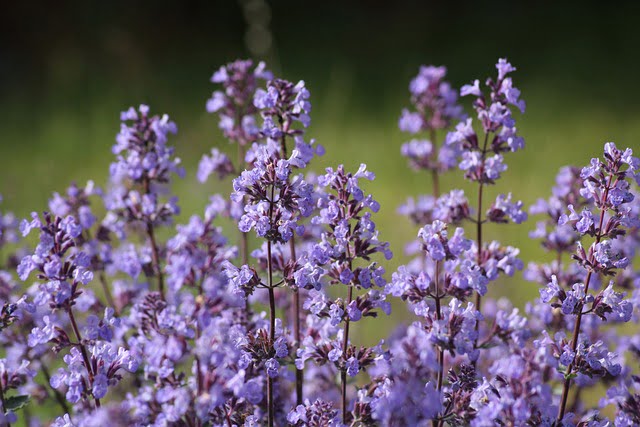
Vegetables That Complement Rhubarb
Beans: Boosting Rhubarb’s Productivity
Beans, with their nitrogen-fixing abilities, play a crucial role in enriching the soil and promoting robust rhubarb growth. The symbiotic relationship between beans and rhubarb involves the exchange of nutrients, with beans supplying nitrogen to the soil, which rhubarb utilizes for healthy foliage and stalk development. Additionally, the dense foliage of bean plants acts as a natural ground cover, suppressing weeds and conserving soil moisture, further benefiting nearby rhubarb plants.

Brassicas: Enhancing Soil Health
Brassicas, including cabbage, broccoli, and kale, are valuable companions for rhubarb due to their nutrient-rich foliage and deep root systems. These vegetables improve soil structure and fertility, making essential nutrients more accessible to rhubarb plants. Additionally, brassicas act as dynamic companions, attracting beneficial insects that prey on pests like leaf beetles, thus contributing to pest control in the garden.

Beetroot: Supporting Rhubarb Growth
Beetroot, with its deep taproot system, enhances soil aeration and moisture retention, creating favorable conditions for rhubarb root development. The presence of beetroot in the garden also helps suppress weeds, reducing competition for resources and allowing rhubarb to thrive. Furthermore, beetroot’s nutrient-rich foliage decomposes over time, enriching the soil with essential minerals and organic matter that benefit nearby rhubarb plants.

Fruits That Pair Well with Rhubarb
Thornless Blackberries: A Sweet Alliance
Thornless blackberries and rhubarb form a delightful partnership, sharing similar growing requirements and complementing each other’s flavors. While rhubarb adds tartness to culinary creations, thornless blackberries contribute sweetness, resulting in delectable desserts, jams, and preserves. Additionally, the sprawling habit of blackberry bushes provides natural ground cover, suppressing weeds and conserving soil moisture, which benefits nearby rhubarb plants.
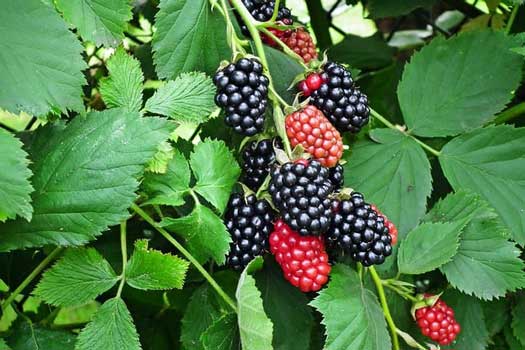
Cane Fruits: Enhancing Garden Diversity
Cane fruits, including raspberries and blackberries, coexist harmoniously with rhubarb, offering a diverse array of flavors and textures for culinary exploration. These fruits thrive in similar soil and sun conditions, making them compatible companions in the garden. The intertwining canes of raspberries and blackberries create a lush backdrop for rhubarb, enhancing the aesthetic appeal of the garden while providing ample opportunities for creative cooking and preserving
Rhubarb Strawberry: A Classic Combination
The pairing of rhubarb and strawberries is a timeless favorite among gardeners, celebrated for its complementary flavors and visual appeal. Rhubarb strawberries thrive in the same growing conditions, making them ideal companions in the garden. The tartness of rhubarb balances the sweetness of strawberries, creating a harmonious blend of flavors in pies, crisps, and jams. Furthermore, both plants benefit from each other’s presence, with strawberries acting as ground cover to prevent soil erosion and rhubarb providing structural support and pest resistance.
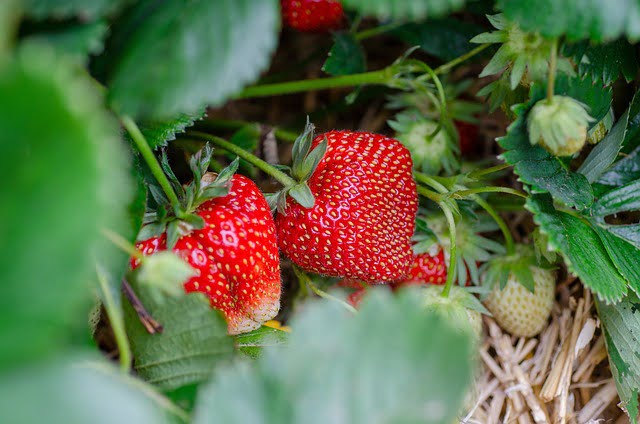
Herbs That Enhance Rhubarb Growth
Sage: A Flavorful Ally
Sage, with its aromatic leaves and earthy flavor, plays a vital role in enhancing the health and flavor of rhubarb. When planted alongside rhubarb, sage acts as a natural pest repellent, deterring harmful insects such as leaf beetles and aphids. Additionally, sage’s deep roots help improve soil structure and nutrient retention, creating a fertile growing environment for rhubarb. The flavorful leaves of sage can be harvested and used to infuse culinary dishes with a delightful savory note, elevating the taste of rhubarb-based recipes.
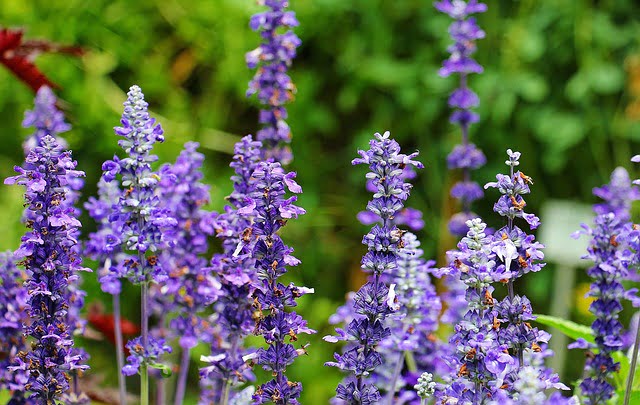
Garlic: Warding off Pests
Garlic is another invaluable herb that promotes rhubarb health and vitality. Its pungent aroma repels pests such as root weevils and nematodes, protecting rhubarb roots from damage. Additionally, garlic’s sulfur compounds help deter fungal diseases and improve soil health by enhancing microbial activity. Planting garlic near rhubarb not only safeguards against pests and diseases but also enriches the soil with essential nutrients, fostering robust rhubarb growth.

Thyme: Enhancing Flavor and Soil Health
Thyme is prized for its aromatic foliage and culinary versatility, making it a valuable companion for rhubarb. When grown alongside rhubarb, thyme contributes to soil improvement by increasing organic matter and enhancing soil structure. Thyme’s antimicrobial properties help suppress soil-borne pathogens, reducing the risk of disease in rhubarb plants. Furthermore, the delicate leaves of thyme add a subtle herbal flavor to rhubarb dishes, enhancing their complexity and depth.
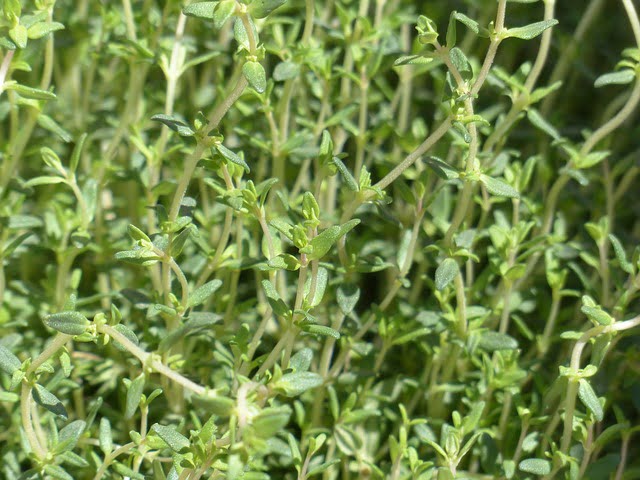
Bad Companion Plants for Rhubarb
While planning your garden layout, it’s essential to be mindful of certain plants that may not be conducive to optimal rhubarb growth and health. Among these are docks, corn, and tomatoes, which, if planted near rhubarb, can potentially hinder its cultivation. Let’s explore the reasons behind avoiding these specific companions to ensure the flourishing of your rhubarb patch.
Docks: Competition for Resources
Docks, with their vigorous growth and expansive root systems, can compete with rhubarb for essential nutrients, water, and space. Their aggressive nature may overshadow rhubarb plants, limiting their access to sunlight and inhibiting their growth. Additionally, docks are known to harbor pests and diseases that could potentially spread to nearby rhubarb plants, posing a threat to their health and productivity.
Corn: Tall and Shade-Casting
Corn, with its tall stature and dense foliage, has the potential to cast shade over neighboring plants, including rhubarb. Rhubarb requires ample sunlight to thrive and produce robust stalks, and excessive shading from corn can impede its photosynthesis process. Moreover, corn’s extensive root system may compete with rhubarb for soil nutrients and moisture, leading to stunted growth and reduced yields.
Tomatoes: Sharing Similar Diseases
While tomatoes and rhubarb may seem like compatible companions due to their differing growth habits, they share susceptibility to certain diseases, such as tomato wilt and crown rot. Planting tomatoes near rhubarb increases the risk of disease transmission, as pathogens can easily spread between the two plants, compromising their health and vitality. Additionally, tomatoes require frequent watering, which may lead to waterlogging in the soil, negatively impacting rhubarb roots and causing root rot.

Rhubarb Care and Maintenance
Caring for rhubarb plants is a fulfilling task that ensures their vigor and productivity, leading to abundant harvests of delectable stalks. By incorporating essential care practices such as fertilization, watering, and winterization techniques, along with considerations for soil pH, companion plants, sulphur content, and root movement, you can foster robust rhubarb growth and health in your garden.
Fertilization: Nourishing Rhubarb Naturally
Fertilizing rhubarb is vital to provide the necessary nutrients for vigorous growth and abundant yields. Opt for organic fertilizers to promote soil health and sustainability. Compost, well-rotted manure, and organic fertilizer blends enrich the soil with essential nutrients while improving soil structure and fostering beneficial microbial activity. These natural amendments contribute to balanced nutrition, enhancing rhubarb growth and resilience.
Watering: Consistent Moisture for Optimal Growth
Maintaining consistent soil moisture is key to rhubarb’s success, as it relies on adequate hydration for vigorous growth. Water rhubarb plants regularly, especially during dry spells, ensuring the soil remains evenly moist without becoming waterlogged. Organic mulch, such as straw or leaves, helps retain soil moisture, suppress weeds, and regulate soil temperature, creating an ideal environment for rhubarb growth.
Soil pH: Balancing Soil Acidity
Soil pH plays a crucial role in rhubarb cultivation, as it affects nutrient availability and plant health. Rhubarb prefers slightly acidic to neutral soil conditions, with a pH range of 6.0 to 7.0. Test the soil pH periodically and amend it as needed to maintain optimal acidity levels for rhubarb growth. Adding organic matter such as compost can help buffer soil pH and create a favorable growing environment for rhubarb.
Companion Plants: Enhancing Garden Biodiversity
Incorporating companion plants into the rhubarb garden promotes biodiversity and supports overall plant health. Suitable companion plants such as strawberries, beans, and garlic offer mutual benefits such as pest control, soil improvement, and nutrient cycling. Planting companion herbs like sage and thyme can also enhance rhubarb flavor and deter pests, contributing to a thriving garden ecosystem.
Sulphur Content: Ensuring Soil Health
Sulphur content in the soil affects rhubarb growth and health, as it plays a role in nutrient uptake and soil fertility. Ensure that the soil has adequate sulphur levels for optimal rhubarb cultivation by testing the soil and incorporating sulphur-containing amendments if necessary. Organic sources of sulphur, such as gypsum or elemental sulphur, can help correct soil deficiencies and promote healthy rhubarb growth.
Root Movement: Providing Adequate Space
Considerations for root movement are essential when planting and caring for rhubarb. Rhubarb plants have deep, extensive root systems that require ample space to spread and access nutrients. Plant rhubarb in well-drained, loose soil to accommodate root growth and prevent overcrowding. Avoid planting rhubarb near competing plants with aggressive root systems to ensure adequate space and resources for rhubarb development.
By incorporating these essential care practices and considerations into your rhubarb maintenance routine, you can cultivate thriving, resilient plants that yield abundant harvests season after season. With proper fertilization, watering, soil pH management, companion planting, attention to sulphur content, and consideration for root movement, you’ll enjoy a flourishing rhubarb patch that enhances the beauty and productivity of your garden.

FAQ’s Companion plants for Rhubarb
Can I plant rhubarb near blueberries?
A: While rhubarb and blueberries have different soil and sun requirements, they can coexist if planted with careful consideration. Blueberries prefer acidic soil, while rhubarb thrives in slightly acidic to neutral soil conditions. Ensure proper spacing and soil amendments to accommodate the needs of both plants.
What are some rhubarb companion plants ?
A: Best companion plants for raspberries offer mutual benefits. Suitable companions include strawberries, beans, garlic, sage, and thyme. These plants contribute to pest control, soil improvement, and enhanced flavor while promoting overall garden biodiversity.
what not to plant near rhubarb?
A: what not to plant with raspberries to prevent potential issues. Plants like docks, corn, and tomatoes may compete with rhubarb for resources or transmit diseases. Additionally, plants with aggressive root systems or shading habits should be avoided to ensure optimal rhubarb growth and health.
What to plant with rhubarb?
When deciding what to plant with rhubarb, it’s important to choose companions that offer mutual benefits. Some excellent options include strawberries, which provide ground cover and complement rhubarb’s flavor; beans, which enrich the soil with nutrients and support rhubarb growth; garlic, known for its pest-repellent properties; herbs like sage and thyme, which attract beneficial insects and improve soil health; leafy greens, which benefit from rhubarb’s partial shade; and companion flowers such as marigolds and chamomile, which attract pollinators and repel pests. By selecting compatible companions, you can create a thriving garden ecosystem that supports the growth and productivity of your rhubarb plants.
Are Strawberries and raspberries good companion plants for rhubarb ?
Yes, both strawberries and raspberries are excellent companion plants for rhubarb. Strawberries provide ground cover, suppress weeds, and attract pollinators, while their sweet flavor complements the tartness of rhubarb in culinary dishes. Raspberries coexist harmoniously with rhubarb, offering a diverse array of flavors and textures for culinary exploration. These fruits thrive in similar soil and sun conditions, making them compatible companions in the garden. By incorporating strawberries and raspberries into your rhubarb garden, you not only enhance flavor and pest control but also promote biodiversity and resilience in your garden ecosystem.
Conclusion: Rhubarb Companion Planting
Incorporating Rhubarb companion plants into your rhubarb garden can significantly enhance its growth, health, and overall productivity. By strategically selecting rhubarb companion plant such as strawberries, raspberries, and other suitable options, you create a diverse and mutually beneficial ecosystem that promotes soil fertility, pest control, and nutrient cycling. Rhubarb companion planting not only maximizes garden space but also fosters biodiversity and resilience, resulting in thriving rhubarb plants and flavorful harvests.
Whether you’re planting strawberry rhubarb plant for their complementary flavors or choosing companion herbs like sage and thyme to deter pests and enrich the soil, thoughtful selection of companion plants is key to success. Consideration of factors such as soil pH, root movement, and compatibility ensures harmonious coexistence among plants, leading to a harmonious and productive garden.
Strawberries and raspberries are excellent companion plants for rhubarb. Strawberries provide ground cover, suppress weeds, and attract pollinators, while their sweet flavor complements the tartness of rhubarb in culinary dishes. Raspberries, on the other hand, coexist harmoniously with rhubarb, offering a diverse array of flavors and textures for culinary exploration. These fruits thrive in similar soil and sun conditions, making them compatible companions in the garden. The intertwining canes of raspberries create a lush backdrop for rhubarb, enhancing the aesthetic appeal of the garden while providing ample opportunities for creative cooking and preserving. By incorporating strawberries and raspberries into your rhubarb garden, you not only enhance flavor and pest control but also promote biodiversity and resilience in your garden ecosystem.
In conclusion, companion plants for rhubarb offers numerous benefits, from improving soil health and deterring pests to enhancing flavor and attracting beneficial pollinators. By incorporating rhubarb companion planting into your garden, you create a vibrant and sustainable ecosystem that supports the growth and well-being of your plants. Experiment with different companion plant combinations to discover the perfect companion plants rhubarb patch, and enjoy the rewards of a thriving and abundant harvest.
For further exploration of gardening articles, kindly visit our webpage: Home Garden

